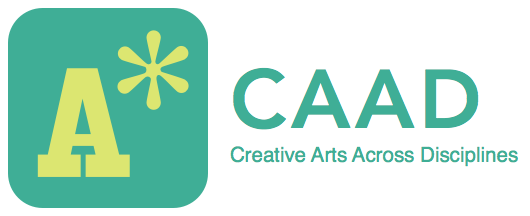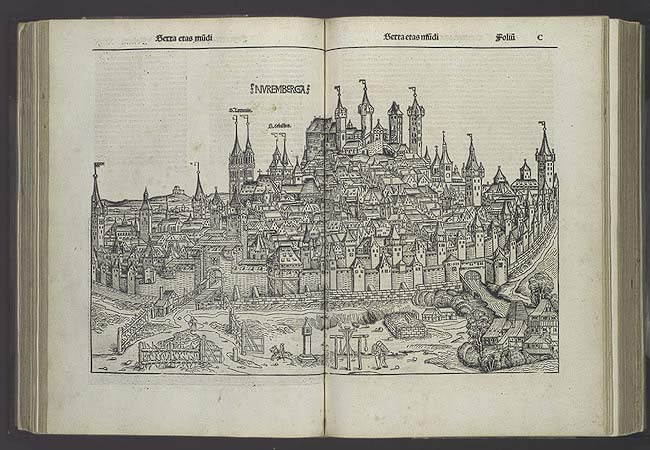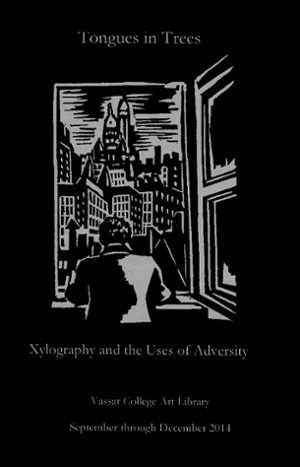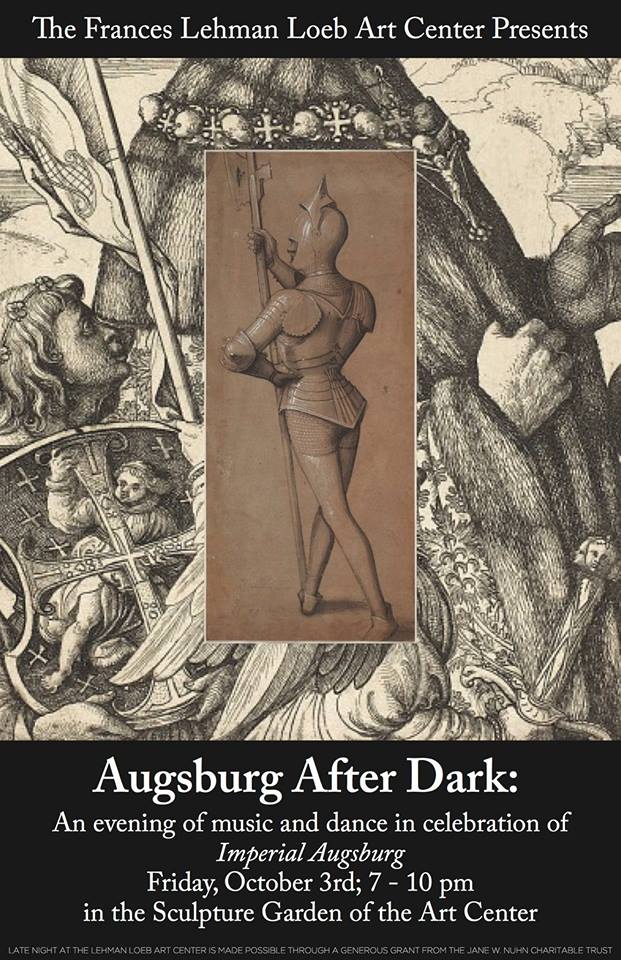Last week I had the pleasure of taking some time to myself and to explore three incredibly interesting exhibitions on display throughout Vassar’s campus in anticipation of the grand opening of Imperial Augsburg: Renaissance Prints and Drawings 1475-1540.
To prepare myself for the Augsburg exhibit, I was sure to stop by Thompson Memorial Library, where antiquated copies of the Nuremberg Chronicle of 1493 are displayed alongside historical background information as well as explanations of the content of the book. The Nuremberg Chronicle is a compilation of extremely detailed wood cut illustrations that depict many cultural aspects of Nuremberg and serve as maps of the city. The production of the book was influenced by the publication of the Gutenberg Bible in 1455. The Nuremberg Chronicle was compiled by doctor, humanist, and bibliophile Hartman Schedel but was printed by Anton Koberger. In 1493, Nuremberg was considered an imperial city under the leadership of Holy Roman Emperor Maximilian I. Located in present-day central Germany, Nuremberg was not only a militarily strategic city, geographically in a position to maintain a degree of peace between the Ottoman Empire and France, but also an economically and politically independent city, which allowed for the culture in the city to really flourish. The prints in the Chronicle themselves speak much to the culture of the city, all filled with Christian symbols as well as references to ancient Greek and Roman figures, as was common during the Renaissance.
The purpose of displaying the Nuremberg Chronicle on Vassar’s campus is that the book serves as a great complement to the Lehman Loeb’s exhibition Imperial Augsburg, as the show features prints produced around the same time that the Nuremberg Chronicle was being compiled. Both Nuremberg and Augsburg were important imperial cities; however, more attention was historically given to Nuremberg. This does not mean that Augsburg was shy on art and culture, however; on the contrary, many social, political, and religious struggles in Augsburg, in combination with the city’s self-rule and thriving business, trade, and industry, gave way to immense amounts of patronizing art, especially in the form of woodcut prints. As woodcut prints became a more common practice, it was soon discovered that several woodcuts printed together on large surfaces was cheaper to produce than tapestries, which became very appealing, especially to wealthy aristocrats who put much thought into decorating their homes. Another trend in art that spurred from the production of woodcut prints was portrait metals, in which detailed portraits were imprinted on various metal materials. What was most striking to me about the various prints in the exhibit, however, was the variety of experimentation in technique that occurred throughout the time period exhibited. Different styles of etching, either with thick lines or fine lines, allowed for different textures in the production of prints. Many artists experimented with color in prints, or multiple rounds of “biting” the prints, providing deeper value to the prints. Some artists even used techniques of “highlighting” with white media, or using gold or silver leaf to give the prints a more ornamental design. Some artists kept to etching into wood, while others branched out by cutting into various metals instead. Hans Burgkmair, for example, etched into wrought-iron plates. He also produced what are called chiaroscuro prints, a process that involves biting the plates several times with different shades of ink to create value, or the effect of “light and dark.” Burgkmair’s chiaroscuro print “Emperor Maximilian on Horseback” is one of my favorite pieces in the entire exhibit, for the incredible detail and delicacy along with the patience of layering different values makes the print strongly resemble a drawing. Albrecht Dürer used a similar technique in creating his work, “The Triumphal Chariot of Maximilian I,” which is comprised of 8 panels, each featuring either part of the chariot or the horses and female figures guiding the chariot.
An excellent, complementary exhibit to both the Nuremberg display and the Augsburg show is Tongues in Trees: Xylography and the Uses of Adversity, located in the Art Library. This collection is a contemporary representation of cities in the United States inspired by the same techniques used in making woodcut prints during the Renaissance. While all three exhibits feature woodcut prints, Tongues in Trees stands out in that it takes a more abstract and symbolic approach to representing the cities featured in the showcase. While the maps and depictions of Augsburg and Nuremberg appear to be more realistic and representational, the ones in Tongues and Trees rely more heavily upon emotion and abstraction. One series of prints centers around the World Trade Center and the tragedy of 9/11. The work features the repetition of overlapping hands and eyes, both very expressive and emotional parts of the body. Printed words and phrases, such as news headlines and the names of different victims, are also incorporated into the images. Another series depicts Los Angeles; in one of these pieces, the sign reads “Lost Angeles,” and is accompanied by images of waves, floods, comets alongside the more banal, urban images of hotels, sky scrapers, and limousines. The works in all three exhibits seem to portray their respective cities in a way that is, in one respect, accurate and objective, but in another sense suggests some type of disorder that is unsettling.
I encourage everyone to check out all three of these excellent exhibits, for they complement each other very well, and really give audiences an in-depth look at the art of printmaking in the past and present. Both the Nuremberg Chronicle in Thompson Memorial Library and Tongues in Trees in the Art Library will be on display through December, as will Imperial Augsburg in the Frances Lehman Loeb Art Center.
Also be sure to attend the event “Augsburg After Dark” taking place this Friday from 7-10 pm in the Sculpture Garden of the Art Center. The event will not only be showcasing the exhibit, but will also feature live music from local artists as well as Vassar students. German food will also be served. To find out more information, visit the Facebook event page!
Gratitude to Freyda Spira and Gregory Jecmen for their presentations about Augsburg and the Vassar College Library’s catalogue “Never Before Has Your Like Been Printed: The Nuremburg Chronicle of 1493″ for its information about the Nuremberg Chronicle.




